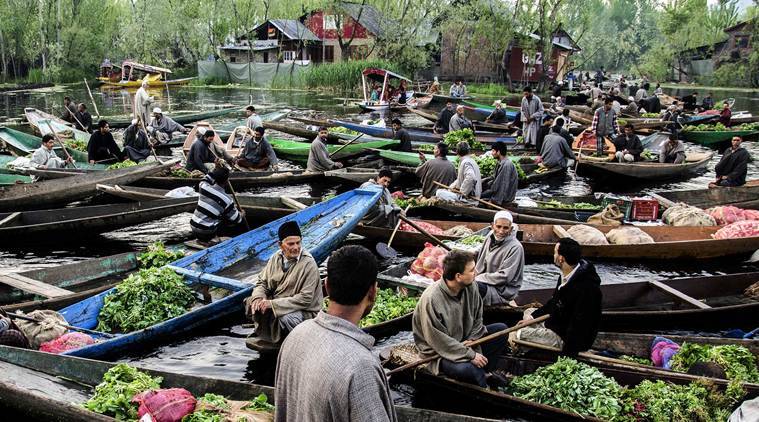Pakistan and India gained independence from British rule in August 1947. At the time of partition, the princely states had the option of ceding to either Pakistan or India. Geographic location, societal dynamics, individual preferences, and other considerations, according to Mountbatten, all seem to be traditional. Whereas India was a secular country, Hindu majority states went there, while Muslim majority states ended up going to Pakistan. Kashmir, on the other hand, was an isolated case.
The king, Maharaja Hari Singh, was a Hindu. He aimed for Kashmir to be autonomous, but he annexed it with India without seeking the consent of Muslims in exchange for the assistance of Indian military forces to put an end to the rioting and widespread turmoil in Kashmir, because India deemed it necessary to annex Kashmir with it in order to acquire military support. Pakistan and India fought wars over Kashmir territory after independence in 1947 and 1965, as well as a limited war in 1999. In the hope that the UN would force Pakistan to withdraw, Nehru decided to ask the UN Security Council to mediate the situation. As a result, on January 1, 1948, Nehru wrote to the UN Security Council, claiming the following:
According to Article 35 of the UN Charter, any member may bring any situation to the Security Council’s attention if it is likely that its continuation will jeopardise the maintenance of international peace and security. This current state of affairs between India and Pakistan is brought on by the support that invaders…are receiving from Pakistan for operations against Jammu and Kashmir, a State that joined the Dominion of India. The Indian government wants the Security Council to tell Pakistan to stop right away this act of aggression against India.
On January 15, 1948, Pakistan responded to India’s letter to the UN Security Council by submitting their own letter, denying India’s claims, clarifying their own stance on Kashmir by emphasizing the concept of Kashmiri people’s self-determination, and expressing a number of other complaints about India’s actions. The UNO’s greatest achievements are considered to be self-determination and the decolonization process. Decolonization resulted in the formation of numerous governments. The UNSC immediately demanded a ceasefire and passed multiple resolutions, including two UNICIP resolutions, to resolve the Kashmir conflict in accordance with the wishes of its member nations.
This resolution required both India and Pakistan to withdraw their armed forces and hold a plebiscite so that the people of Kashmir could choose which state to join. The resolution appeared to be an attempt by the UN Security Council to put the right to self-determination into action. India ignored the UN’s call for self-determination. The UNCIP and Security Council saw the Kashmir issue as nothing more than a territorial dispute between India and Pakistan. As a result, it here seems that neither the Security Council nor any of its members ever endorsed Kashmir’s decision to secede.
In fact, no discussion of whether the planned plebiscite should include an alternative to a simple vote on which state to join is mentioned in any of the three UNCIP reports (S/1100, S/1196, and S/1430). The UN has been a party to the conflict since 1948 as a result of its decision on Kashmir. In contrast, India has chosen a strategy of gradual de-escalation in the Kashmir conflict and changing the status of occupied Kashmir. On August 5, 2019, India’s Illegally Occupied Jammu and Kashmir (IIOJK) was designated as a union territory, completing the process of absorbing Kashmir into the Indian state.
It established a three-member (UNCIP) commission to investigate and mediate the dispute in January 1948. Resolution 47 re-established UNCIP as UNMOGIP in April 1948. On January 24, 1948, the first group of UN military observers arrived in the mission area to supervise the ceasefire between India and Pakistan. The UNMOGIP stationed UNMOs at UN Field Stations on both sides of the LoC. Pakistan and India both have UN Field Stations. The headquarters of the UNMOGIP oversees field station operations. The UNCIP was established in January 1948 by the Security Council’s adoption of Resolution 39 to mediate the conflict.
These agreements remained in effect until the Karachi Agreement on July 27, 1949, which established a ceasefire line under UN supervision. The Karachi Agreement stated that UNCIP would send observers as needed, and local commanders from both sides would mutually monitor the ceasefire line on the ground with the assistance of UNMO. When a cease-fire was declared on December 17, 1971, a number of locations on both sides of the 1949 cease-fire line had changed hands. The Security Council passed Resolution 307 (1971), which called for a permanent cessation of hostilities in all conflict zones until all armed forces had left the area and relocated to positions that fully respected the J&K ceasefire line under the supervision of UNMOGIP.
The LoC in Kashmir defined by an agreement between India and Pakistan in July 1972 followed the same path as the ceasefire line established by the Karachi Agreement in 1949, with a few minor exceptions. In the event of a conflict, UNCIPMA would be consulted, and their decision would be final. On March 30, 1951, the Security Council decided in Resolution 91 that UNMOGIP would continue to supervise the ceasefire in Jammu and Kashmir after UNCIP was dissolved. In addition to observing and reporting, UNMOGIP was in charge of investigating allegations of ceasefire violations and reporting its findings to all parties as well as the Secretary-General. Since the 1972 Simla Agreement, India has maintained a policy of non-recognition of third parties (J&K). Pakistan’s military authorities never stopped reporting suspected ceasefire violations to UNMOGIP. Instead of using a negotiation approach and involving an arbitration party, the military authorities of India have not filed a complaint to limit the operations of UN observers on the side of the ceasefire managed by India since January 1972, and the issue however has remained unresolved.





